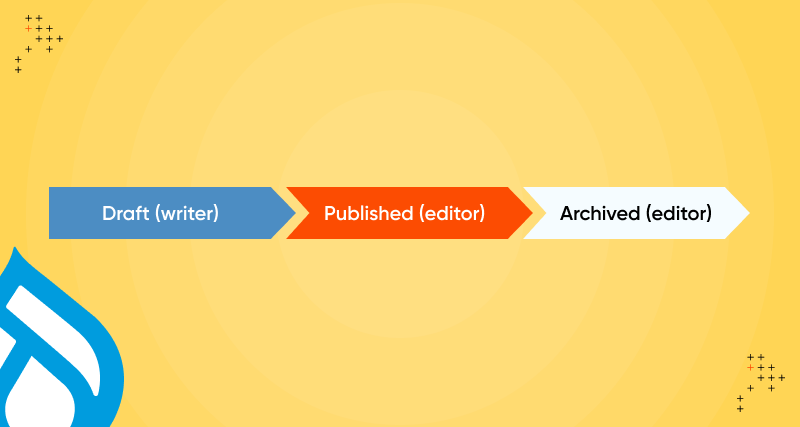Introduction
College website designs have to include much for many. Our team has experienced this first-hand. Multipurpose platforms for institutions of higher education have to be high-functioning and appeal.
These sites need to appeal to faculty; they have to look serious, academically excellent, and easy to navigate.
For prospective students, they must look fun, modern, and trendy.
To appeal to the parents of prospective students, relevant information about the school's curriculum must be there along with available student services, reputation, and a professional atmosphere. They want to feel their children and their career development will be in good hands.
To appeal to alumni, sites have to communicate the school's continuing emphasis on providing the same high quality of education the alumni received in their days at school.
And in the case of state-funded colleges, these must make politicians and taxpayers proud.
College & University Websites Have Important Functions
Besides appealing to different groups of people. They must also serve the needs of teachers who use it to post homework assignments, reading lists, syllabuses, and additional resources for example. Consider: students use it for homework, blogging, and email too. Behind the public pages, a university website is a content management system. The design must serve its functioning with an emphasis on an intuitively easy user interface.
One example of a university website migrating to a content management system Drupal, the preferred platform for institutes of higher education, is SUNY Maritime University.
With all of this considered, website design trends change and change quickly. University and college website designs have to keep up, while still pleasing all audiences.
9 Trends Changing College Website Designs
1. Digital assistants
Your school's website should already be optimized for mobile. However, now you need to invite the personalized digital assistants such as Siri, Google Now, and Cortana. Make certain you optimize your site's content accommodate these programs.
2. Virtual reality
Digital assistants are just the beginning of how Artificial Intelligence and related technologies are going to affect website trends. Although not yet necessary, VR is a growing trend. Start planning how prospective students can tour your school by donning their VR equipment.
3. Online videos
E-commerce stores convert the most visitors to customers by including three elements on every page for every product:
- Text headline and description
- Enticing static image
- Video
School websites already use the first two, but new trends in college website designs mean incorporating the third. The school's president introduces everyone. Heads of departments talk about their departments. Teachers explain what they do to help students. Recent alumni enthuse about how much the school prepared them for their current job or to go on the medical, law or graduate school. Current students rave about their classes and how much they're learning.
When prospective students and their parents spend time watching and listening to such videos, they will be highly impressed with the high quality your school's staff displays.
4. Infographics
Interactive images have supported online college courses and are familiar ways of showcasing information to students (or anyone else). These immersive experiences are good for parents and students—an excellent way to explain services. And because of how easy these are to design, colleges can commission them in-house.
5. Accessibility and personalization
Incorporate the most up-to-date technologies to format the content to make it accessible to teachers and students with physical challenges. Follow the law, and go as far beyond the law as the current state-of-the-art allows.
Technology and social media also shape how students access the university's content. The art student will need different content than the engineering major, yet you must serve both.
6. The long scroll
Visitors to universities and colleges want information. They don't expect short, quickie articles. They're concerned with content, with curricula, lecture schedules, class notes, recommended reading lists and links to scientific papers.
They want you to format the content it's easy to digest, but that doesn't mean chopped into tiny chunks and spread across many web pages. When they find what they need to know, it's more convenient to fit the information on one page, even a long one, than to keep clicking.
7. Large images, hero shots, slideshows, carousels
In the "big picture" of how vision affects how people feel and think about a subject, sight is the most important sense. See, the larger and more vivid an image is to you, the more enticing it is. That's why people continue to watch movies on large screens in theaters. And it's why television screens for home use, and home theaters, continue to grow in popularity as technological advances make them as large as possible.
And that's why large pictures that up the entire width of a website, and sometimes the entire screen, are becoming so popular. People react more to the image and less to words.
Today college website designs are the same way. When you go to a university's website and see a photograph of its beautiful campus, it's more enticing and inviting spread across your entire screen then just stuck up in the upper left-hand corner.
And when those big images are rotated, they give the visitor an even greater overall mental feeling for the school's size, depth, and diversity.
8. Individualistic layouts
The same old designs and layouts bore visitors because they've seen it all before. However, individualistic and excitedly creative designs and layouts catch their interest and engage them. Students understand the school is one that's modern and cutting edge. Parents recognize competence and professionalism, and it reassures them.
The article 2016 Web Design Trends explains the impact and other ways the details of website designs are changing. Many of these trends will intersect, as videos get so large they occupy the background or the full screen.
9. Drupal
The websites of all Ivy League universities such as Harvard and MIT use Drupal. Drupal has proven these top schools that it serves higher education website needs. For a lot more information and resources on how it serves sites of higher education, check out Drupal for Educational Institutions or 12 Reasons to Use Drupal in Higher Education.
We're a worldwide technology partner with a burning passion for being the best Drupal agency in the world. Contact Axelerant to discover how your college or university can use Drupal to keep up with the latest trends in college website designs.

Nathan Roach, Director of Marketing
Germany-based consumer of old world wine and the written word. Offline you can find him spending time with his wife and daughter at festivities in the Rhineland.

 We respect your privacy. Your information is safe.
We respect your privacy. Your information is safe.



Leave us a comment